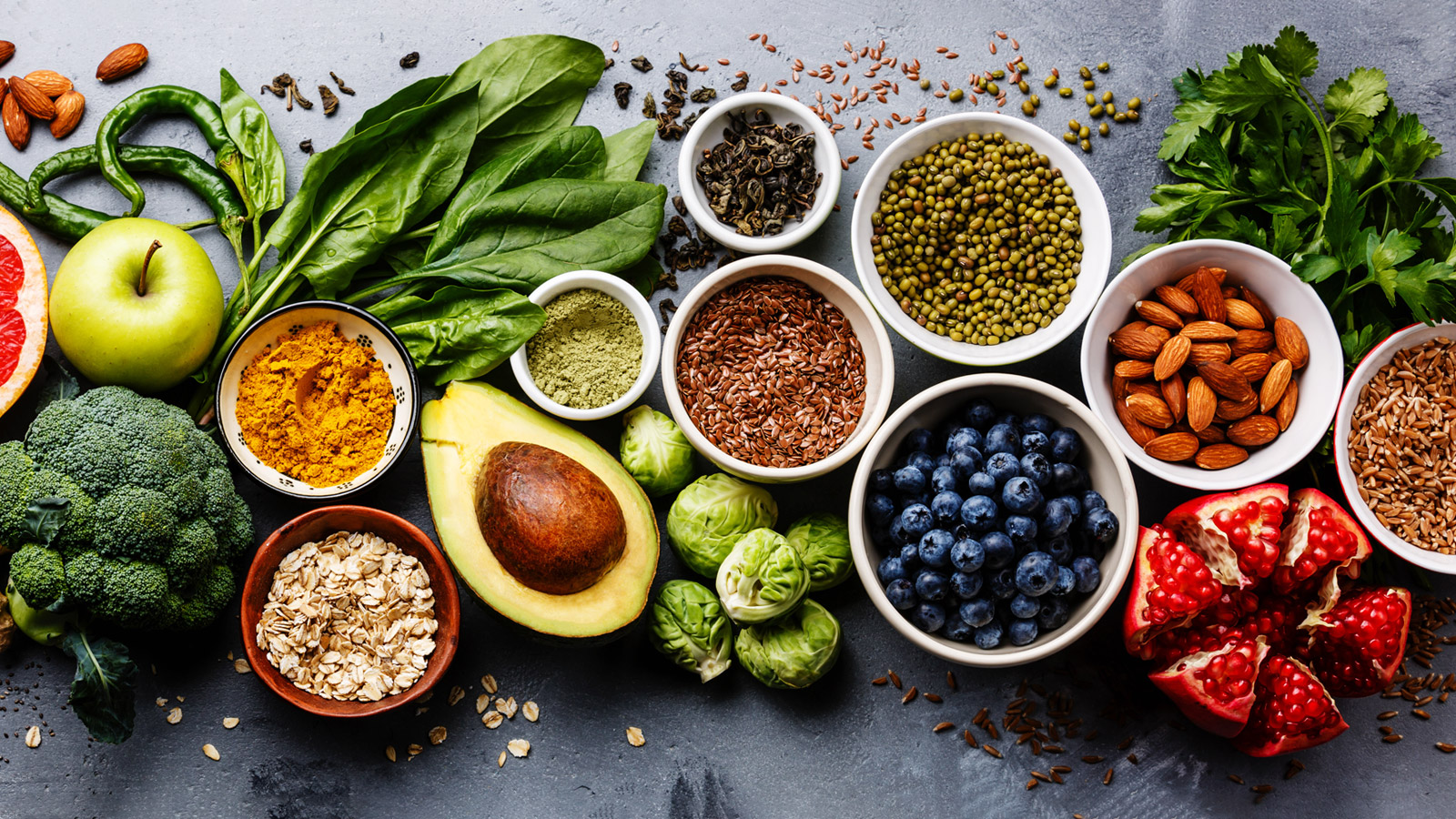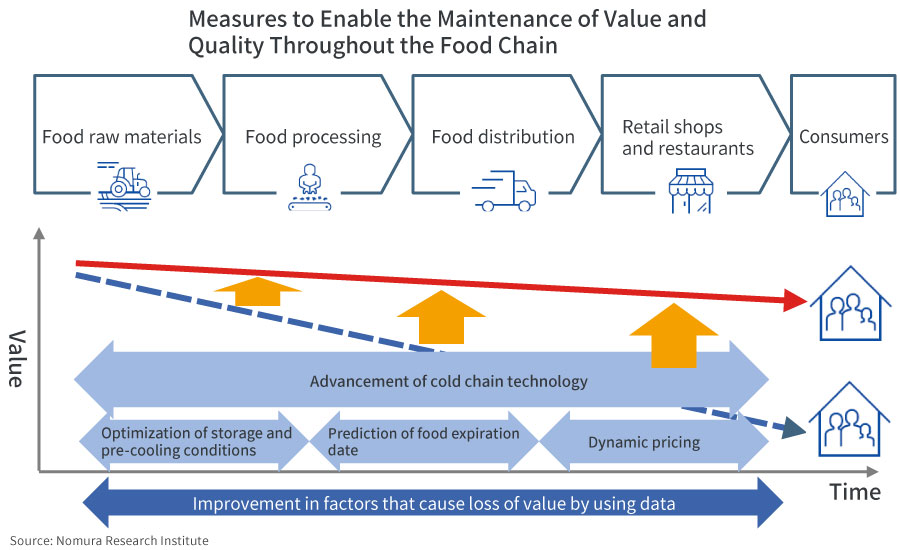
Eliminating Food Losses through Digital Food Chain
Japan is estimated to have an annual food loss of 6.5 million tons per year and this has become a social issue. In October 2019, the Food Loss Reduction Promotion Act came into effect, requiring local governments to formulate food loss reduction plans and other related businesses to make efforts to reduce such losses. Takaharu Iwamura of the Nomura Research Institute, Ltd. (NRI), who has been involved in the food industry for many years, believes that advancing digitalization and information linkage throughout the food chain, from production to processing, distribution, and retail, will lead to reduced food losses, increased efficiency, and higher added value. Let’s discuss how digitalization will change the food industry.
Converting untracked information into value
How advanced is the digitalization of the food industry?
The food industry involves a wide range of stakeholders, from production to sales. Production sites upstream of the supply chain are engaged in IoT agriculture, which connects everything to the Internet. On the other hand, downstream operations like sales and retail utilize digital channels, such as e-commerce (EC) and omni-channels, linking Internet and retail outlets. However, we believe that food processing and distribution, digitalization, and information utilization of the entire chain are still in the process of development.
As for the use of information throughout the chain, there have been moves to improve traceability by indicating the place of origin and producers.
Since around 2000, traceability has been steadily ensured. Keeping aside the question of the extent of digitalization, there are initiatives in the livestock industry to assign individual identification numbers and track them, and at supermarkets to display the information of the farms from where vegetables are procured. In practice, however, information such as the actual harvest date, processing date, and the expiration date is not individually managed and displayed for most of the fresh produce. In fact, there is a variation in the freshness, nutritional value, and expiration date of vegetables collected from the same farm depending on the condition in which they are transported and stored, such as whether they were thoroughly temperature-controlled or kept at room temperature.
In recent years, consumption of pre-cut vegetables, salads, and fruits has been increasing, particularly in the case of single-person households and elderly consumers. However, since their shelf life is generally set at one or two days after processing, strict product management is required at stores, leading to food waste or loss. Even so, one manufacturer has been able to double the consumption time for pre-cut vegetables by thoroughly linking all processes, from collection to processing and storage, at 4-5°C.
There are significant differences in nutritional values as well. For example, studies show that the vitamin C content of broccoli, even when stored in a refrigerator in the dark, is reduced to one-third within three days of harvesting. However, it is difficult to judge whether the broccoli in front of you was harvested this morning or three days ago by appearance alone. Usually, vegetables delivered earlier from the time of harvest have more nutritional value and should be priced accordingly.
We believe that we can increase the value of the entire food chain by managing data at the individual product level, including collateral information that was not previously traced.

Managing individual items via blockchain
It takes a lot of effort and money to manage individual items consistently throughout the food chain.
Until now, management costs and benefits were not balanced, but with the advancement of digital technology, the environment is about to change drastically.
In the United States, IBM and Walmart have jointly introduced a mechanism to manage the production and distribution history of individual fresh food items using the blockchain technology. The use of blockchain enables food chains that involve a large number of distributors and processors to manage information on individual products, such as distribution history while ensuring consistency and transparency. It also eliminates the need for large-scale core systems and initial investment, allowing SMEs and private farmers to use this information management mechanism at a low cost.
Digital technology can also be used to measure the freshness of food products during shipping and distribution. It is now possible to assess food conditions through image analysis based on the data gathered from automatic harvesting machines and fruit sorting machines, as well as images from cameras installed in display cases and unmanned stores.
Food loss problem as the opportunity for the acceleration of digitalization
What kind of companies can take the lead when various companies collaborate to manage data across the entire chain?
In the United States, major retailers such as Walmart, Carrefour, and Albertsons are embracing attempts to digitally manage food chains. Similarly, in Japan, the leadership of retailers such as major supermarkets and convenience stores will become important. The costs associated with food waste is a cause of concern for all companies, so I think it will be a good opportunity to consider managing data of individual products.
Food chains have the potential to create added value for consumers if they can clearly present facts such as nutritional value and health benefits, but they are not fully utilizing this potential. We hope to continue working with people in a variety of industries to create a system that collects and converts information buried throughout the food chain into value, which is then used to generate profits for businesses and enrich the lives of consumers.

Profile
-
Takaharu Iwamura
* Organization names and job titles may differ from the current version.